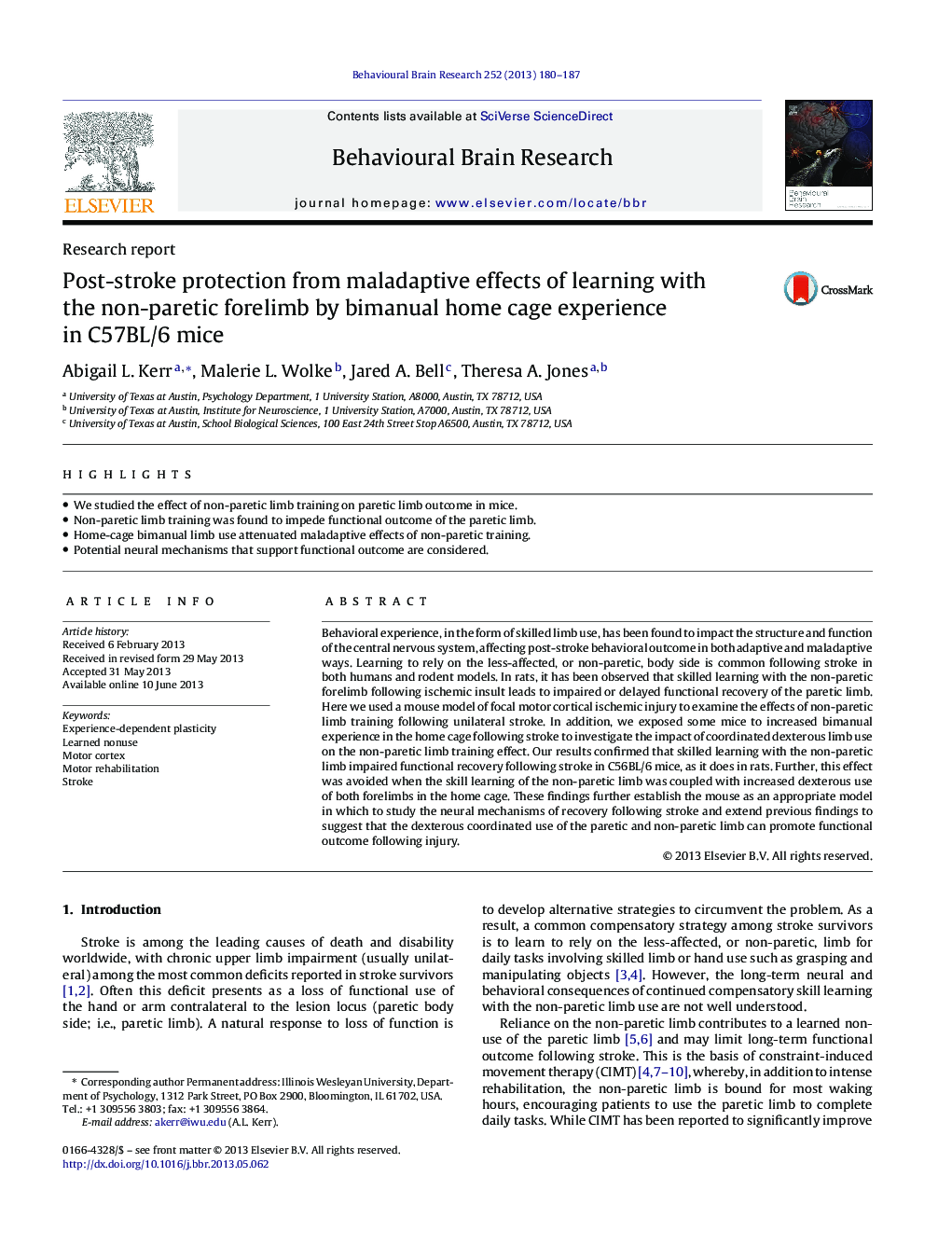| کد مقاله | کد نشریه | سال انتشار | مقاله انگلیسی | نسخه تمام متن |
|---|---|---|---|---|
| 4312606 | 1612980 | 2013 | 8 صفحه PDF | دانلود رایگان |

• We studied the effect of non-paretic limb training on paretic limb outcome in mice.
• Non-paretic limb training was found to impede functional outcome of the paretic limb.
• Home-cage bimanual limb use attenuated maladaptive effects of non-paretic training.
• Potential neural mechanisms that support functional outcome are considered.
Behavioral experience, in the form of skilled limb use, has been found to impact the structure and function of the central nervous system, affecting post-stroke behavioral outcome in both adaptive and maladaptive ways. Learning to rely on the less-affected, or non-paretic, body side is common following stroke in both humans and rodent models. In rats, it has been observed that skilled learning with the non-paretic forelimb following ischemic insult leads to impaired or delayed functional recovery of the paretic limb. Here we used a mouse model of focal motor cortical ischemic injury to examine the effects of non-paretic limb training following unilateral stroke. In addition, we exposed some mice to increased bimanual experience in the home cage following stroke to investigate the impact of coordinated dexterous limb use on the non-paretic limb training effect. Our results confirmed that skilled learning with the non-paretic limb impaired functional recovery following stroke in C56BL/6 mice, as it does in rats. Further, this effect was avoided when the skill learning of the non-paretic limb was coupled with increased dexterous use of both forelimbs in the home cage. These findings further establish the mouse as an appropriate model in which to study the neural mechanisms of recovery following stroke and extend previous findings to suggest that the dexterous coordinated use of the paretic and non-paretic limb can promote functional outcome following injury.
Journal: Behavioural Brain Research - Volume 252, 1 September 2013, Pages 180–187